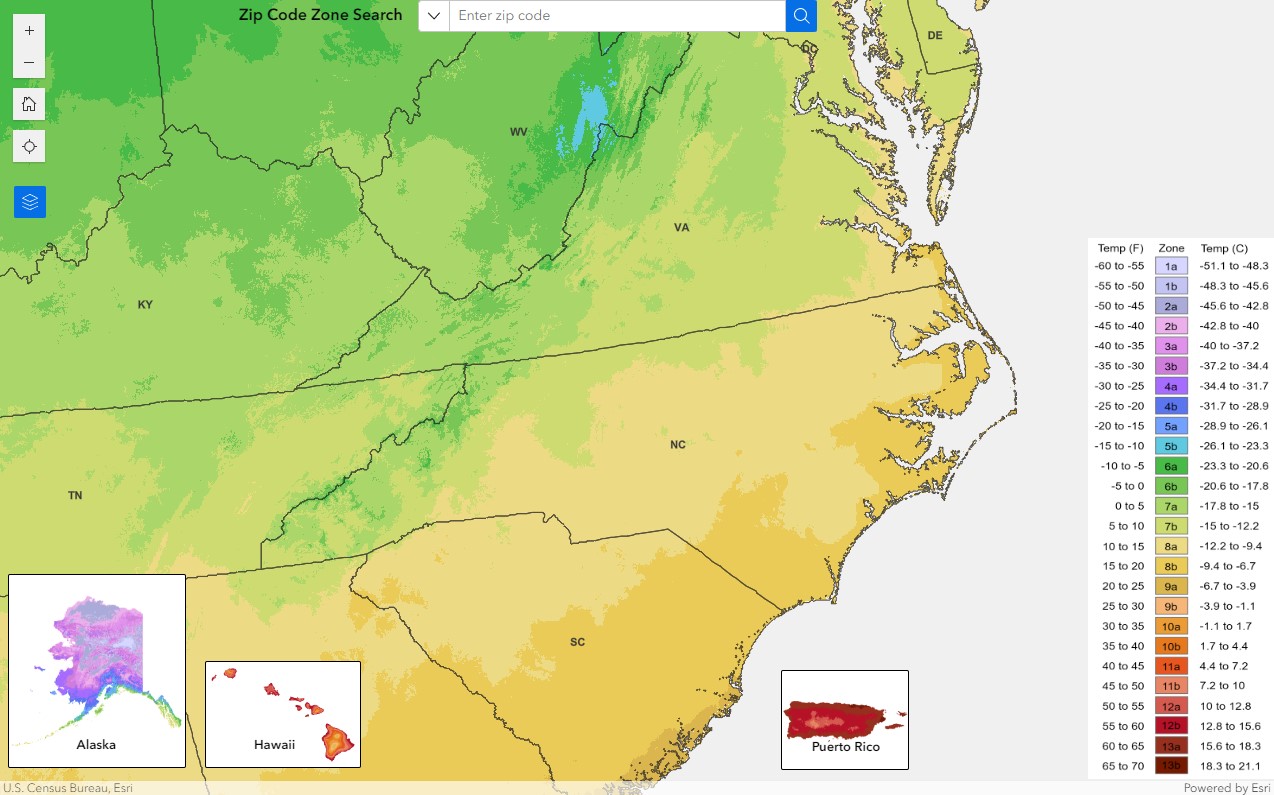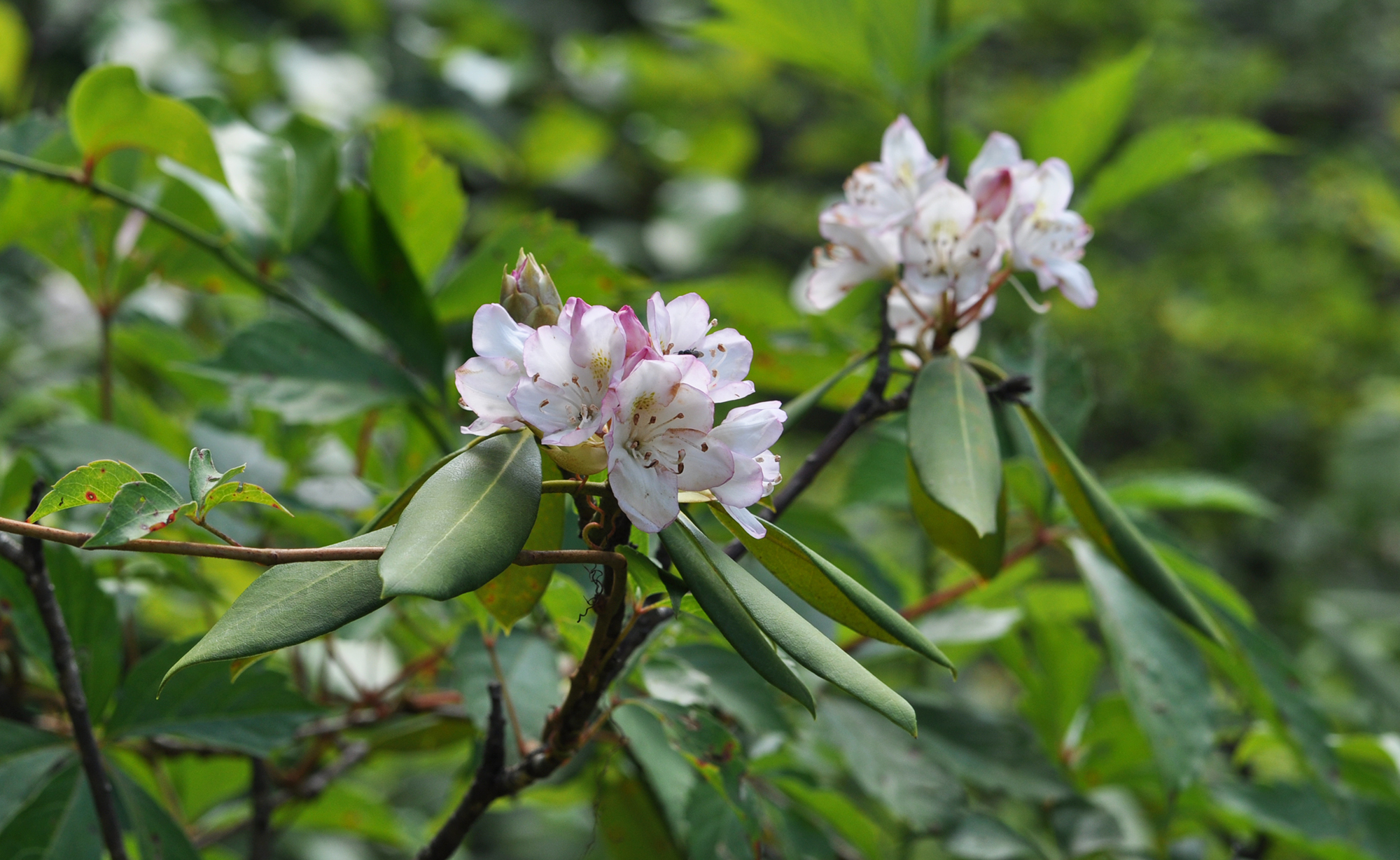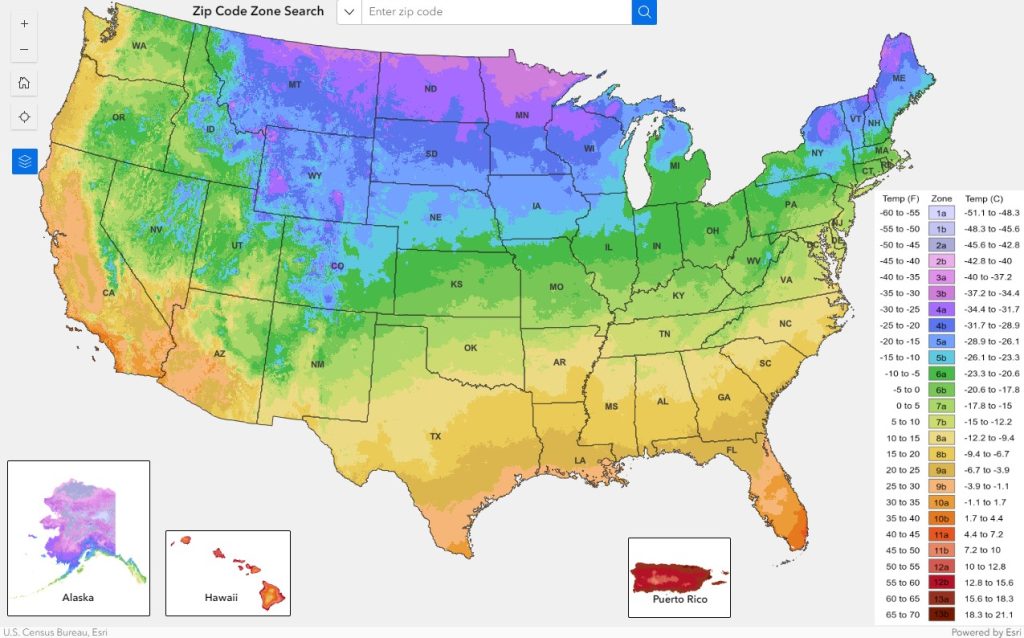By Bao Anh Tran, NCBG Communications Intern
In mid-November 2023, the United States Department of Agriculture (USDA) revealed new changes to its Plant Hardiness Zone Map, updated from the previous 2012 version.
This map is a useful tool for gardeners to figure out which species are most likely to thrive at a particular location. According to the USDA’s Agricultural Research Service, the new version is based on 30-year averages of the lowest annual winter temperatures. These are divided into 10-degree zones and 5-degree half zones. The map represents what is known as the “average annual extreme minimum temperature,” a crucial factor in figuring out what to plant at specific locations in the winter. The 2023 map uses more data points than its 2012 counterpart, collecting data from 13,412 weather stations across the United States, as compared to the 7,983 weather stations used prior.
Chapel Hill, North Carolina, home of the North Carolina Botanical Garden, moved from Zone 7b (5 to 10 degrees Fahrenheit) in 2012 to Zone 8a (10 to 15 degrees Fahrenheit) in 2023 as a result of rising winter temperatures.

This could prove challenging for some of the Garden’s iconic Habitat Gardens, which represent the major ecoregions of North Carolina: the Sandhills, Coastal Plain, Piedmont, and Mountains. Plants in the Mountain Habitat prefer cooler temperatures and better-draining soil, already struggling with our hot summers.
According to Dan Stern, the Garden’s director of horticulture, now that the temperature of the region has increased, “the plants [in the Mountain Habitat] are not as happy. They aren’t flowering, and while there are leaves, there might not be enough energy to support flowering [or] fruiting.”
Stern says that if native plants are pushed to an extreme where the zone changes from 8a to 8b, this might mean the Garden won’t be able to grow them anymore.
“Maybe in 50 years, they’ll be happier in Charlottesville,” says Stern.

But plants aren’t sentient beings, meaning they can’t uproot themselves and move to an area with a more suitable climate, so they will die out if temperatures become too extreme. This zone change will also affect wildlife. According to Stern, “Insects needs to exist within [a certain] range [of warmth], and if this range shifts during the year, they might migrate, but this migration is different from those of plants.”
Most flowering plants rely on insects for pollination, and some insects also disperse seeds. Changes to insect populations can disrupt entire ecosystems. Additionally, some plants that are just below the threshold of invasiveness in the area may become a bigger issue as we head towards a warmer reality.
But this isn’t all bad news. This shift may mean certain plants will be able to thrive for longer throughout the year, like tomatoes, so gardeners can use this information to their benefit in terms of what plants to grow in their garden. Stern said it will be easier to grow some exotic plants like banana and palm trees, which gardeners tend to be excited about.
As the USDA zone change brings new opportunities and challenges for gardeners, it’s more important than ever to incorporate native plants into your garden.
“Once people have made the connection to something, anything really, they are a stronger advocate for its protection,” said Stern.
